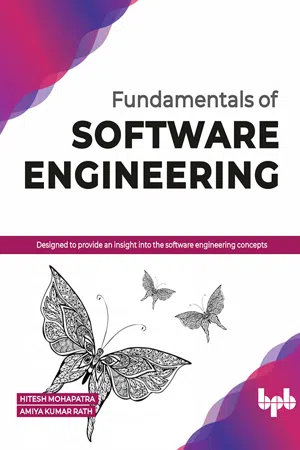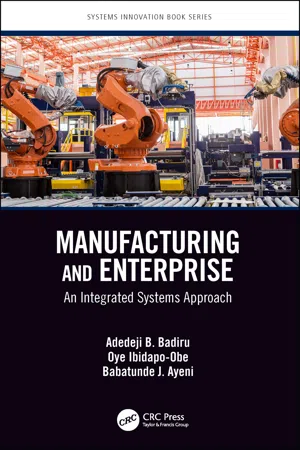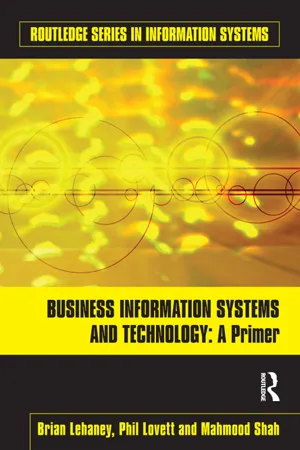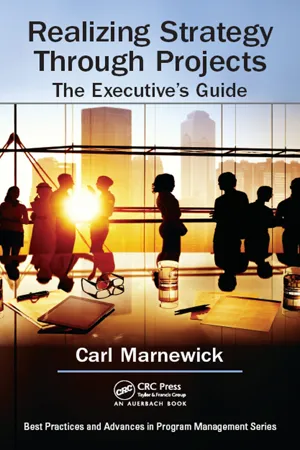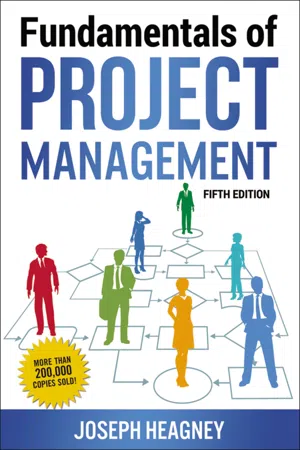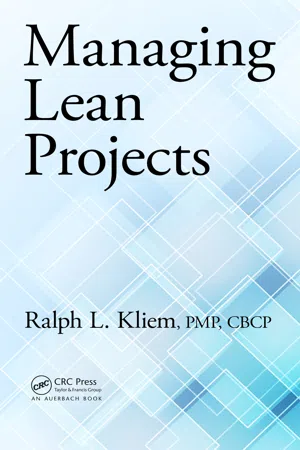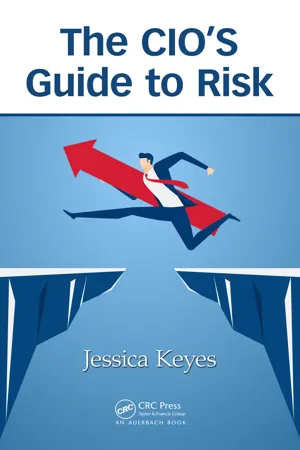Technology & Engineering
Project Management
Project management involves planning, organizing, and overseeing the execution of a project to achieve specific goals within a set timeframe and budget. It encompasses defining project scope, allocating resources, managing risks, and ensuring effective communication among team members and stakeholders. Effective project management is crucial for the successful delivery of technology and engineering projects.
Written by Perlego with AI-assistance
Related key terms
12 Key excerpts on "Project Management"
- eBook - ePub
Engineering Your Future
The Professional Practice of Engineering
- Stuart G. Walesh(Author)
- 2012(Publication Date)
- Wiley(Publisher)
This definition suggests the wisdom of focusing on the end result, which is the reason to undertake a project. While the majority of tasks you undertake in a project may not be new, the desired deliverable, that is, the product, service, or result will be unique. In other words, the basic tasks in conducting a project (e.g., collecting data, setting up a computer model, estimating costs, interacting with regulatory personnel) are not new. What’s new is the context—client, owner, customer, stakeholders, team members, constraints, and the physical and socio-economic-environmental situation.Examples of technical projects are preparing a proposal, collecting data, developing a plan, writing a report, preparing plans and specifications, manufacturing a product, constructing a structure or facility, and carrying out a training program. Projects typically involve the cooperative efforts of two or more people. This team effort implies communication and coordination—challenges that can be met with the assistance of material presented in this chapter and in Chapters 3 and 4. Although this chapter discusses ways to more effectively manage engineering and other technical projects, many of the ideas and much of the information presented are applicable to other professions and to projects you may lead or participate in for your community, religious group, club, or other organization.Project Management DEFINEDPMI defines Project Management as (PMI 2008) “the application of knowledge, skills, tools, and techniques to meet the project requirements.” With its emphasis on meeting project requirements, this definition is aligned with the definition of quality underlying Chapter 7 in this book. That definition of quality is, simply put, meeting all requirements. Accordingly, we could also define Project Management as providing quality.A common implicit or explicit feature of Project Management definitions is simultaneously satisfying deliverable, schedule, and budget expectations. Figure 5.1 - eBook - ePub
Fundamentals of Software Engineering
Designed to provide an insight into the software engineering concepts
- Hitesh Mohapatra(Author)
- 2020(Publication Date)
- BPB Publications(Publisher)
HAPTER 4Software Project Management Framework
Objectives
Project Management is the discipline of planning, organizing and managing resources to bring about the successful completion of specific project goals and objectives. It is often closely related to and sometimes conflated with program management.A project is a temporary endeavor, having a defined beginning and end (usually constrained by date, but can be by funding or deliverables), undertaken to meet particular goals and objectives, usually to bring about beneficial change or added value. The temporary nature of projects stands in contrast to business as usual, which are repetitive, permanent or semi-permanent functional work to produce products or services. In practice, the management of these two systems is often found to be quite different, and as such requires the development of distinct technical skills and the adoption of separate management.In this chapter, we are going to discuss:- Techniques for activity scheduling and cost optimization
Project Definition
A project is a multitask job with due consideration of performance, cost, time, and scope requirements and is done only one time. It has a definite starting and ending time with budgets and costs having clearly defined scope or magnitude of work to be done.There is a need to optimize the project resources considering the complexity of the business, time, and resources at least cost.Project Management
Project Management is the application of knowledge, skills, tools, and techniques to project activities to meet project requirements. Project Management is accomplished through the application and integration of the Project Management processes of initiating, planning, executing, monitoring and controlling, and closing. The project manager is the person responsible for accomplishing the project objectives.This does not mean that the knowledge, skills, and processes described should always be applied uniformly on all projects. The project manager - Timothy J. Havranek(Author)
- 2017(Publication Date)
- CRC Press(Publisher)
The essential feature of any project is to bring about change. Projects are initiated to create products or situations that are more desirable than those currently in place. Simply stated, Project Management is about making things happen, accomplishing change. It is important to note the use of the word “management.” It indicates that project managers accomplish change through management methods such as planning, directing, coordinating, and integrating the activities of others (the project team). Although this is a management rather than a technical role, project managers are most effective when they have a functional, if not detailed, knowledge of the various facets of the industries in which they are operating (i.e., project managers need to understand or have a working knowledge of the technical field).The resources available to accomplish change are usually, if not always, limited. Since resources are limited, project managers are always attempting to accomplish the maximum amount of change using the minimum amount of resources. Project Management, then, can be further understood as attempting to do more with less.This “doing more with less” approach to problem solving has been referred to by the great scientist, engineer, architect, and inventor R. Buckminster Fuller as the process of ephemeralization. This process is firmly in place, for instance, in the computer, communications, and transportation industries, where technologies are becoming faster, more powerful, and more efficient — while using fewer resources. Finding new ways to accomplish more useful work while utilizing fewer resources is necessary for the competitive survival of all companies.Our present technological and competitive environment is characterized by rapid, accelerating change. Modern Project Management processes represent a sound approach for coping with a changing environment by allowing more work to be accomplished with fewer resources. The additional work is accomplished by working smarter, not harder- eBook - ePub
Manufacturing and Enterprise
An Integrated Systems Approach
- Adedeji B. Badiru, Oye Ibidapo-Obe, Babatunde J. Ayeni(Authors)
- 2018(Publication Date)
- CRC Press(Publisher)
Project Management is the application of knowledge, skills, tools, and techniques to project activities in order to meet project requirements. Project Management can also be defined as the practice of initiating, planning, executing, controlling, and closing the work of a team to achieve specific goals and meet specific success criteria at the specified time. A project is a temporary endeavor designed to produce a unique product, service, or result with a defined beginning and end (usually time-constrained, and often constrained by funding or staffing) undertaken to meet unique goals and objectives, typically to bring about beneficial change or added value.The aim of Project Management is to achieve all of the project goals within the given constraints. This information is usually described in project documentation, created at the beginning of the development process. The primary constraints are scope, time, quality, and budget. The secondary, and more ambitious, challenge is to optimize the allocation of necessary inputs and apply them to meet pre-defined objectives. The object of Project Management is to produce a complete project which complies with the client’s objectives. In many cases the object of Project Management is also to shape or reform the client’s brief in order to feasibly be able to address the client’s objectives. Once the client’s objectives are clearly established they should impact all decisions made by other people involved in the project – project managers, designers, contractors, sub-contractors, etc. If the Project Management objectives are ill-defined or too tightly prescribed it will have a detrimental effect on decision-making. As a discipline, Project Management developed from several fields of application including civil construction, engineering, and heavy defense activity.History of Project ManagementAlthough there has been some form of Project Management since early civilization, Project Management in the modern sense began in the 1950s. The 1950s marked the beginning of the modern Project Management era where core engineering fields came together to work as one. Project Management became recognized as a distinct discipline arising from the management discipline with the engineering model. Most people consider the Manhattan Project to be the first project to use “modern” Project Management. This 3-year, $2 billion (in 1946 dollars) project had a separate project manager and a technical manager. Some people argued that building the Egyptian pyramids was a project, as well as building the Great Wall of China. This time, not only did the Chinese emperor order millions of people to complete the project, but he also made sure that his workforce was divided into three separate groups: soldiers, civilians, and criminals (we guess the latter group got a raw deal). As a discipline, Project Management developed from several fields of application including civil construction, engineering, and heavy defense activity. - eBook - ePub
- Brian Lehaney, Phil Lovett, Mahmood Shah(Authors)
- 2011(Publication Date)
- Routledge(Publisher)
Project Management is an important concept in information system (IS) development, as well as in the implementation of most other business initiatives. Often, the development or implementation of information technology (IT) or the management of change will be run as a project, and will be accomplished using various well-established Project Management techniques and tools. IS development and implementation are often treated as a large-scale project and broken into several smaller projects for managing various different aspects (called project portfolios). These might range from business process change for making the organization ready for new technologies to implementing the technologies themselves.Project Management methodologies offer a systematic approach to all stages of a project by providing guidance on how to plan, monitor and measure every step in a project. Project Management is defined by the Project Management Institute (PMI, 2008) as the application of knowledge, skills, tools and techniques to a broad range of activities in order to meet the objectives of a project. A project is temporary and its timeframe may vary from a few days to several years, depending on the scope of the project.Traditional Project Management methodologies offer structured, low-risk and rigid approaches to Project Management, but may not be the most appropriate in the implementation of new technologies such as e-commerce, which are often implemented in external, customer-facing environments. In such circumstances, e-commerce managers often seem to be willing to take greater risks and to adopt flexible and unorthodox approaches. This is mainly because e-commerce projects are close to the core activity of the organization (promoting and selling their services), so they are likely to use an approach that leaves a greater number of options open and allows for quick adjustments to enable a quick response to fast-changing technologies, the market place and customer preferences.14.3 Planning
There are some techniques for helping to manage complex and large projects, and these will be discussed further on. Before that, let us look at some of the basics about planning goals. Goals may be about personal targets or trying to achieve organizational objectives. Some people say things such as ‘My goal is to get a private pilot’s licence.’ If that person has no plan as to how to achieve that, then it is not a goal in the sense that is meant here. It is a desire or a dream, but nothing more. To plan to achieve goals you need to take into account what is desirable and what is feasible. You also need to consider necessary and sufficient conditions. Another consideration is realism about what is in your control and what is not. - Carl Marnewick(Author)
- 2018(Publication Date)
- Auerbach Publications(Publisher)
Chapter 6 Project Management~ Project Management is the art of creating the illusion that any outcome is the result of a series of predetermined, deliberate acts when, in fact, it was dumb luck. ~— Harold Kerzner*Project Management is the third and foundational level of portfolio, programme, and Project Management. Without Project Management, and for that matter projects, organisations are doomed for failure. Portfolio and programme management focus on the strategic levels where the aim is to deliver on the organisational strategies and associated business objectives. To realise the strategies and business objectives, projects need to be executed and managed. Strategies and business objectives are eventually realised through the successful management of projects. Projects deliver either a service or product that is utilised by organisational leaders to achieve business objectives and realise the strategies.Thus, the importance of Project Management cannot be negated, and executives should realise its importance. Project Management plays the role of an enabler within an organisation, and to successfully fulfil this role, organisational leaders should remove all stumbling blocks that might inhibit the successful delivery of projects. This chapter provides guidelines that can be used to ensure the successful management of projects. First, the concepts of projects and Project Management are discussed to provide a common understanding of what Project Management entails. Second, various standards and methodologies are discussed. New methodologies are pushing the boundaries of Project Management, especially in the field of information technology (IT). Projects cannot be implemented without qualified and competent project managers, and the focus of the fourth section in this chapter is to determine what competencies a project manager should possess. Project Management maturity and project success go hand in hand and are discussed in the fifth and sixth sections. This chapter should assist executives in determining the requirements for the successful delivery of projects.- eBook - ePub
- Joseph Heagney(Author)
- 2016(Publication Date)
- AMACOM(Publisher)
schedule management . (I know, I may be booted out of PMI for such heresy!)Project Cost Management
This is exactly what it sounds like. Project cost management involves estimating the cost of resources, including people, equipment, materials, and such things as travel and other support details. After this is done, costs are budgeted and tracked to keep the project within that budget.Project Quality Management
As commented earlier, one cause of project failure is that quality is overlooked or sacrificed so that a tight deadline can be met. It is not very helpful to complete a project on time, only to discover that the thing delivered won’t work properly! Project quality management includes both quality assurance (planning to meet quality requirements) and quality control (steps taken to monitor results to see whether they conform to requirements).Project Human Resources Management
Project human resources management , often overlooked in projects, involves identifying the people needed to do the job; defining their roles, responsibilities, and reporting relationships; acquiring those people; and then managing them as the project is executed. Note that this topic does not refer to the actual day-to-day managing of people. The PMBOK® Guide mentions that these skills are necessary but does not attempt to document them. Given that these are the most important skills that a project manager must have, the PMBOK® Guide is deficient in omitting them.Project Communications Management
As the title implies, project communications management involves planning, executing, and controlling the acquisition and dissemination of all information relevant to the needs of all project stakeholders. This information might include project status, accomplishments, and events that may affect other stakeholders or projects. Again, this topic does not deal with the actual process of communicating with someone. This topic is also mentioned but not included in the PMBOK® Guide - eBook - ePub
IT Manager's Handbook
Getting your New Job Done
- Bill Holtsnider, Brian D. Jaffe(Authors)
- 2012(Publication Date)
- Morgan Kaufmann(Publisher)
• Simple projects may require only a little planning and all the key information is maintained in someone’s head. A complicated project may need special Project Management software along with group calendaring and scheduling to keep it all on track.• It might have a very tight and immovable deadline (e.g., installing a new tax package before the start of the fiscal year ) or the time frame may be much more forgiving (e.g., “as long as it gets done sometime this year”).Your ability to manage a project so that it meets its goals, within the defined time frame and within the approved budget, will be one of the single most important skills you can develop as an IT Manager.The Value of Project Management
Project Management has become a formal discipline and a widely practiced part of today’s corporate life. While it isn’t necessary for you to become an official “project manager” (PM) and get certified by the Project Management Institute (PMI ), it’s useful for you to know some of the important principles of Project Management to help you in your role as a manager. Every manager has some PM responsibilities, regardless of how those needs are defined; it can be critical to your success to not only accept, but embrace these responsibilities. Take control of the projects in your business life and manage them properly—it will be well worth your effort.Five Key Phases to a Project
Starting withSection 4.2, “Phase One: Scope the Project” on page 106, the five key phases of a project are discussed:1. Scope the project. 2. Develop a project plan. 3. Launch the project. 4. Track the project’s progress. 5. Close out the project.Various companies and organizations define these phases of projects differently. However, these particular five stages are taken from the PMI’s Project Management Body of Knowledge (PMBOK - eBook - ePub
- Ralph L. Kliem(Author)
- 2015(Publication Date)
- Auerbach Publications(Publisher)
Chapter 3Overview of Project Management Fundamentals
Before discussing in detail the use of Project Management (PM) to manage Lean projects, it is important to have a good understanding of what the topic is all about. All too often people talk about PM but fail to understand the fundamentals necessary to make it a reality. Good PM requires knowledge and discipline on the subject. Unfortunately, the overall record of projects completing on time, in just about all industries, is less than satisfactory when measured against three common criteria for success: cost, schedule, and quality. What is covered in this chapter, in concert with the basics of Lean in the next chapter, is a game plan for managing Lean projects.3.1 What Is a Project?
A project is not something that people do routinely. It addresses something that is unique, that is, never having been done before. If it has been done, then it varies significantly due to unique circumstances, such as requirements being different from previous ones. A project also exists for a finite period of time, varying from a few days to a few years, depending on its scale and complexity. Once a project is complete, the entire effort is disbanded or transferred to ongoing operations (refer to Figure 3.1 ). Hence, a project is a set of activities or tasks performed in a logical sequence to attain a unique result, for example, a new building or a software application, and then it concludes. All projects also consume resources, which include labor, such as people with a specific expertise, and nonlabor, such as time and money.Figure 3.1Project or service life cycle.PM is a discipline to manage projects. It consists of a set of proven concepts, tools, and techniques that enhance the possibility of success, however key stakeholders define it. Stakeholders - eBook - ePub
Project Management in Health and Community Services
Getting good ideas to work
- Zhanming Liang, Pauline Stanton(Authors)
- 2020(Publication Date)
- Routledge(Publisher)
3Understanding Project ManagementChapter outline- The terminology of Project Management
- The project life cycle
- Multistage projects
- Examples of project life cycles
- Differentiating projects and programs
- Project Management methods
- Examples of Project Management methods
- Project Management tools
- Digital Project Management tools and technologies
- The method or the tool?
- Project Management resources
- Project Management textbooks
- Project Management journals
- Project Management organisations
- Project Management skills and careers
- Project Management skills
- Project Management careers
- Project Management courses and professional development
- Summary
Many of the people involved in new developments and innovation in health and community services, ourselves included, have learned by doing. That is, we have taken a rational approach to the planning and implementation of something new and used our managerial skills to ensure that it gets done. However, not all staff have had managerial training or experience, and we have found that the practice of expecting competent professional staff to be able to ‘just do’ Project Management is a common problem in the sector. Fortunately, this is changing, and there is a small but growing workforce of experienced professional project managers. Organisations are also now less likely to embark on innovations or changes that need to be managed as projects without realising it.In this chapter we explain the foundations of Project Management as a method, and outline the emergence of careers in Project Management in the sector.The terminology of Project ManagementIn the Project Management literature there are lots of acronyms—for example, PERT (program evaluation and review technique) and WBS (work breakdown structure)—and technical terms such as Gantt chart, ‘close-out’, ‘go-live’, ‘benefits realisation - eBook - ePub
- Jessica Keyes(Author)
- 2017(Publication Date)
- Auerbach Publications(Publisher)
Manage—Portfolio management is not a one-time event. It is a constant process that must be managed. Projects must be continually evaluated based on changing priorities and market conditions.Project Management MethodologiesThere are two major Project Management methodologies. The Project Management Body of Knowledge (PMBOK), which is most popular in the United States, recognizes five basic process groups typical of almost all projects: initiating, planning, executing, controlling, and monitoring, and closing. Projects in Controlled Environments (PRINCE2), which is the de facto standard for Project Management in the United Kingdom and is popular in more than 50 other countries, defines a wide variety of subprocesses, but organizes these into eight major processes: starting a project, planning, initiating a project, directing a project, controlling a stage, managing product delivery, managing stage boundaries, and closing a project.PMBOKPMBOK is an IEEE standard (1490-2003). It provides a methodology for a wide range of project categories, including software, engineering, construction, and automotive. The five basic process groups and nine knowledge areas are typical of most projects, programs, and operations. Processes overlap and interact throughout a project or phase, and are described in terms of inputs (e.g., documents, plans, designs), tools and techniques, and outputs (e.g., documents, products).The nine knowledge areas are project integration management, project scope management, project time management, project cost management, project quality management, project human resource management, project communications management, project risk management, and project procurement management.PRINCE2PRINCE is the UK’s government standard for IT Project Management. The latest version, PRINCE2, was designed for all types of management projects. PRINCE provides a structured approach (i.e., method) to Project Management, within a clearly defined framework. Similarly to PMBOK, PRINCE2 is a process-driven method. It defines forty-five separate subprocesses organized into eight major processes: - eBook - ePub
Project Management in Small and Medium-Sized Enterprises
A European Perspective
- Anna Brzozowska, Wojciech Dyduch, Aleksander Pabian, Agnieszka Dziedzic(Authors)
- 2023(Publication Date)
- Auerbach Publications(Publisher)
The complexity of the project is evidenced by the multitude of institutions responsible for its implementation. Therefore, planning, designing, implementing, realizing, and managing processes are very complex undertakings, requiring participants a lot of creativity, flexibility, responsiveness, regularity, and extensive knowledge not only in the field of management but also in many other areas. The implementation and management of the project is an extremely difficult undertaking that requires diligence, consistency, and enormous determination at every stage of this multi-factor process, both on a national and European scale. Implementation of all planned tasks translates into managerial, infrastructural, and human-related/personal success.2.4 IT Tools in Project Management
To-date, society is dealing with a growing saturation of life with computer and Internet technologies. Appropriate IT tools have become indispensable in life and work. People using IT or ICT tools can be described as (Sobocińska, 2012 , pp. 26–27):- enthusiasts for whom the computer/Internet is an integral part of life and who attach great importance to the possibility of using it;
- communicators who like to talk and express themselves also in the virtual world and use IT primarily to communicate with others;
- those who like innovation and learning, seek to broaden their knowledge and are characterized by searching for information using IT tools; and
- beginners who have been using computers for a short time and strive to create their own place in the virtual space.
An important and very large group is people using IT tools to perform tasks related to their work (professional users). In this context, IT tools are also necessary to work on projects and to improve their management.“Project Management as a discipline was born from the combination of several types of engineering studies as early as at the beginning of the 20th century. But it took almost five decades to understand that without the right tools, achieving success in project can be only considered in terms of a wishful thinking”.(Sadowska, https://www.droptica.pl/blog/czym-sa-metodyki-zarzadzania-projektami-i-ktora-wybrac-dla-twojego-projektu/ , 2022)The usage of IT tools is nowadays a prerequisite for the efficient, reliable, and undisturbed implementation of a project’s processes, from the simplest ones to the more complex. What’s more effective control of decision-making processes in the project is also conditioned by up-to-date and reliable information that is usually obtained and transmitted through technical means of generating and processing information.
Index pages curate the most relevant extracts from our library of academic textbooks. They’ve been created using an in-house natural language model (NLM), each adding context and meaning to key research topics.

